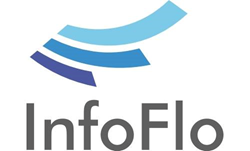Yesterday, I was talking with a good friend of mine about email marketing and our conversation wandered into the topics of email, spam and why people don’t read your emails. Now sitting at my desk writing this blog it got me thinking… what would change this?
Here are 6 tips, tricks and points of advice to reengage your bored and tired email marketing recipients.
1. Stop speaking about your list. Stop speaking about who is subscribed to your lists. Write as if you’re emailing one person only. It instantly makes your email marketing campaigns more personal.
2. Be practical. Don’t email only when you need something from your readers. Be helpful. Be generous. Be friendly. Offer them tips, advice, and anything that can help them become informed decision makers.
3. Be trustworthy. Let people know what to expect. Yes, sales messages should be part of your email marketing, that’s fine. Just be clear about it what happens when they sign up. Many times businesses include these messages in the fine print and customers often learn about them after they’ve signed up; frustrating them as a result.
4. Establish success criteria. This is an important aspect of an effective email marketing campaign. Write down a couple of goals you would like to achieve at the end of the campaign. Monitor these goals using metrics and analytics. Before you send the next email marketing blast, go over the success criteria of the previous blast, see what has worked and what has not, and adapt your future campaigns based on the results.
5. Give, Give and Give More… without Expectation of Return. Members of your email list have gifted you with their attention. Honor that attention. Your responsibility is to ensure they receive value from your email. When you focus on giving useful, relevant and actionable advice you’ll be gifted with more of their attention in the future.
6. Think about mobile. If a campaign doesn’t show up on mobile devices, it’s not going to perform well and you will not be able to attain your success criteria. Everything you send should be mobile-friendly. According to the study, 63 percent of Americans and 41 percent of Europeans would either close or delete an email that’s not optimized for mobile. Might be time to start using a responsive template, if you have not done so already.
Create, Run, and manage email marketing campaigns with the click of a button. InfoFlo CRM Software will allow you to drill down into each email campaign and provide you with real-time analytics.










